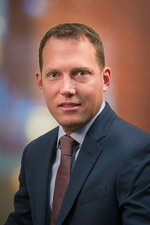ARCHIVED: NOT AVAILABLE FOR CREDIT
Laboratory Testing for Clostridium difficile Infections
Clostridium difficile is the most common cause of hospital-associated diarrhea and community-acquired C. difficile infections (CDI) are rapidly increasing. Accurate and rapid diagnosis is important for appropriate treatment and to initiate infection control measures. A number of traditional and molecular testing strategies are available and will be reviewed.
Originally presented on December 11, 2012, in Salt Lake City, Utah.
Lecture Presenter
 | Robert Schlaberg, MD, MPH Medical Director, Microbial Amplified Detection Laboratory |
Dr. Schlaberg is the medical director of the Microbial Amplified Detection, Virology, and Fecal Chemistry laboratories and an assistant medical director of the Molecular Infectious Disease laboratories at ARUP, as well as an assistant professor of clinical pathology at the University of Utah School of Medicine. He received his MD and doctor medicinæ degrees at the Julius-Maximilians-University in Wuerzburg, Germany and his master of public health at the Mailman School of Public Health at Columbia University in New York City, where he also served as a postdoctoral fellow. Dr. Schlaberg trained in clinical pathology at the Columbia University College of Physicians & Surgeons, where he was the chief clinical pathology resident. He is certified in clinical pathology and medical microbiology by the American Board of Pathology and was awarded the Young Investigator Award by the Academy of Clinical Laboratory Physicians and Scientists.
Objectives
After this presentation, participants will be able to:
- Identify the different testing strategies for Clostridium difficile.
- Compare different testing strategies and list their advantages and disadvantages.
Sponsored by:
University of Utah School of Medicine, and ARUP Laboratories
 Site Search
Site Search

